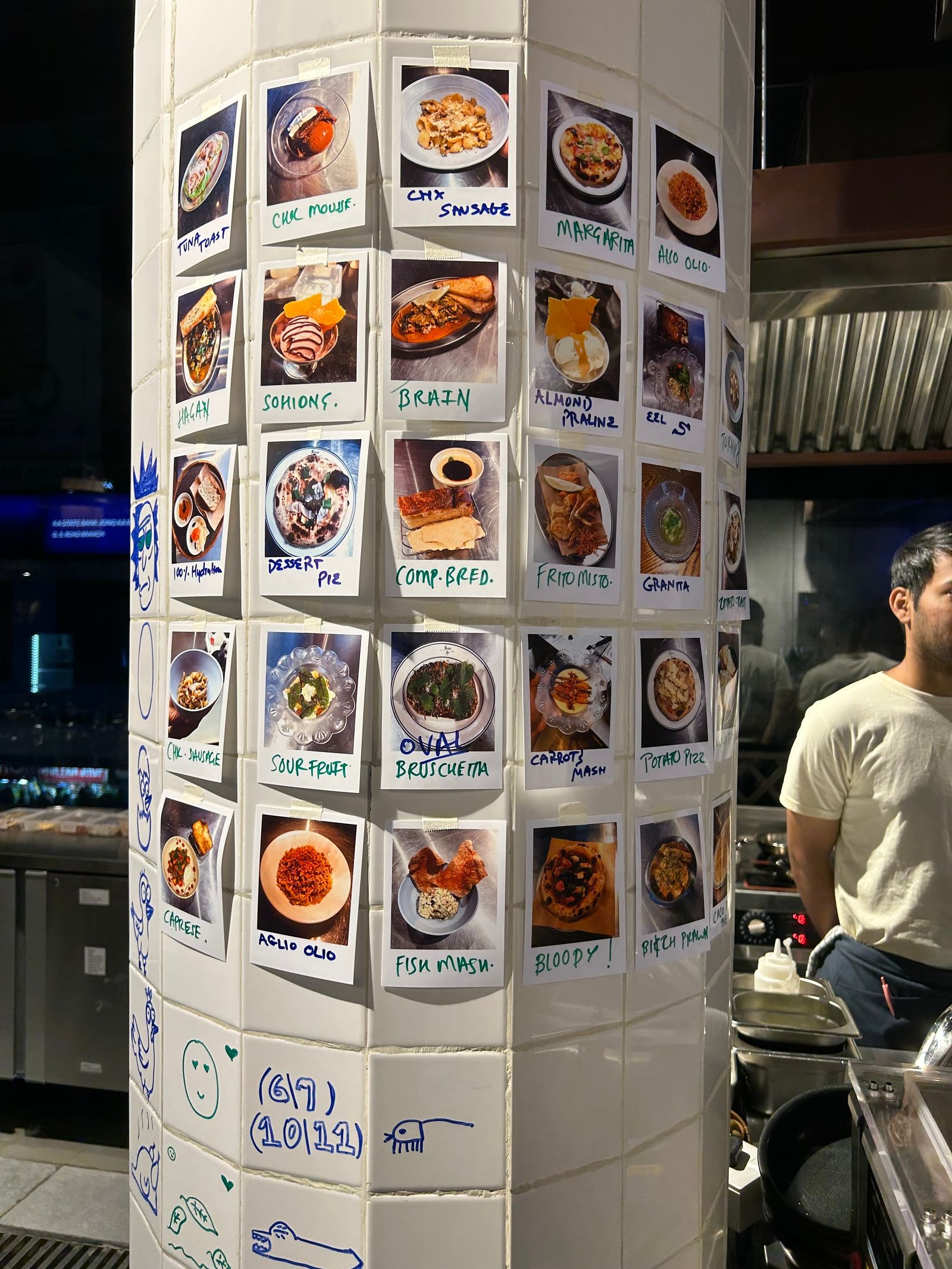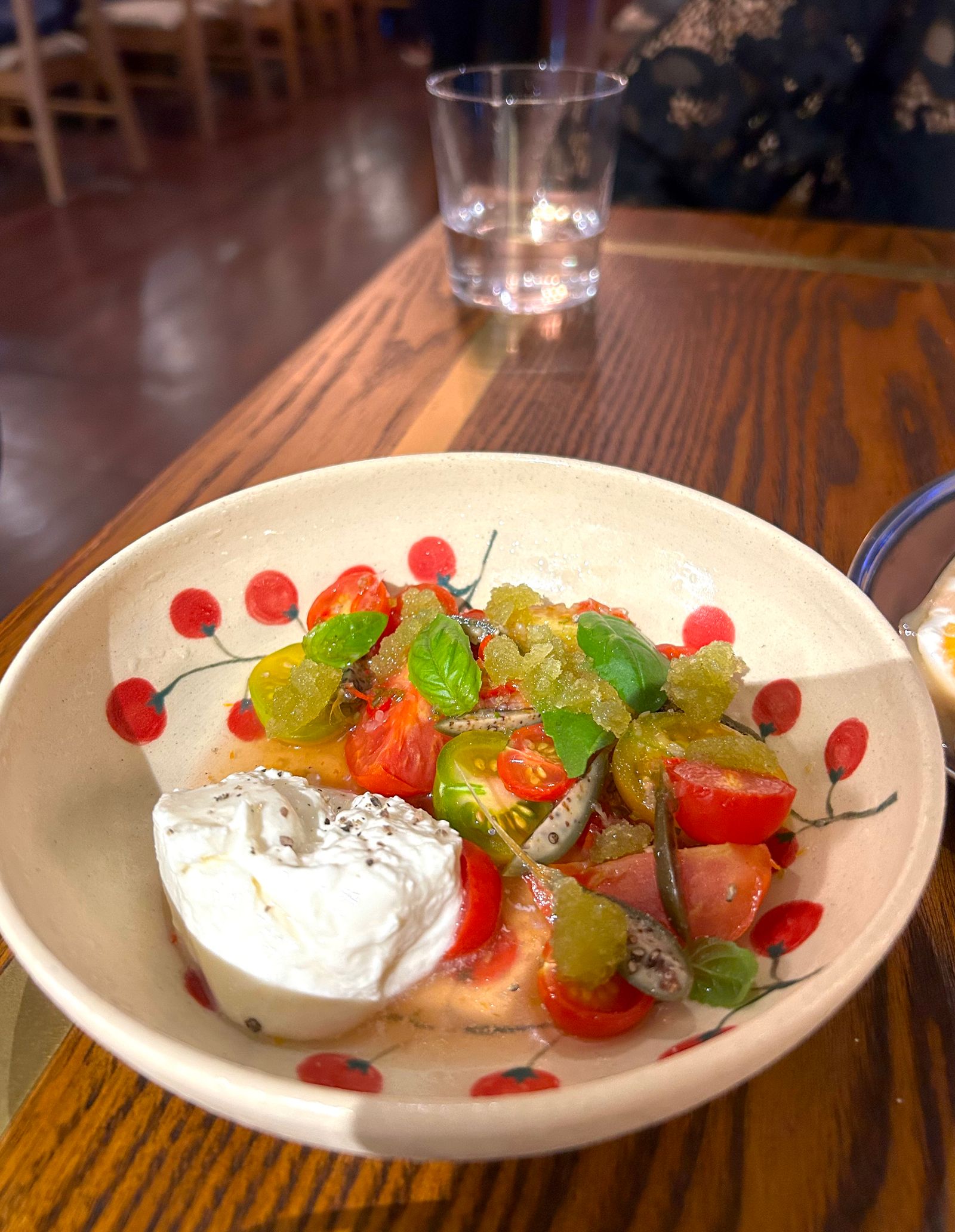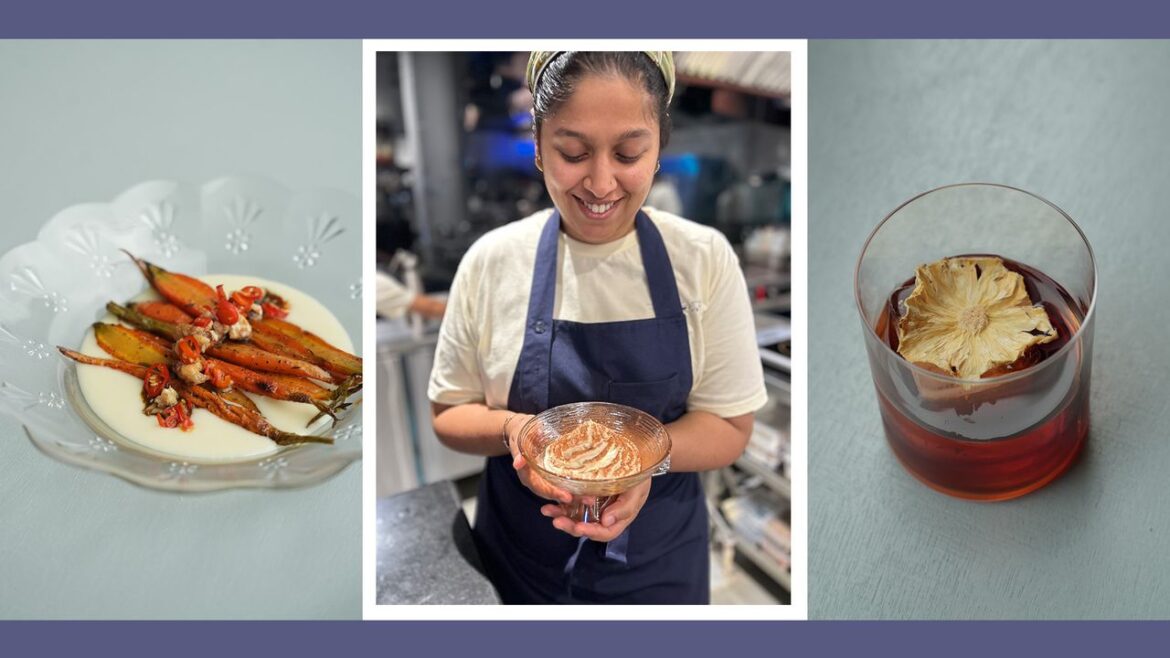
Art pillar in the Nonna Mei kitchen
Diya Kohli
The chef’s expertly hydrated sourdoughs—a feature across all her restaurants—carries forward at Nonna Mei where the dough is the cornerstone of everything from bread to the pizzas. In a continuation of that story, the real “mother” in the Nonna Mei kitchen is Shuruwat, the original 4.5-year-old starter from Ekaa. And she lends life to an assortment of breads prepared in an assortment of ways. One of the stars of this repertoire is the 100% hydration bread, a soft and delicate confection served with Morbier cheese from Assam (with an extra alkalinity that comes from khar), the local GI-tagged pink pineapple, hot sauce, garlic oil and some sohiong balsamic. A crisp Gnocco Fritto (a hollow fried sourdough parcel) with an unctuous glaze of the paper-thin house cured lardo is perfectly balanced by the crisp smoked pork negroni. And then comes the high-hydration, Diavolo pan dough with a fresh tomato base, a spicy chorizo spread, pickled peppers, and a dollop of burrata. A verde pan dough offers the same base with pickled cucumbers, peppers, and a poached egg. Both come in vegetarian versions as well.
Tomatoes from the terrace garden
Nonna Mei
Nonna Mei signature caprese salad
It is with Nonna Mei signature caprese salad that Niyati joins me at the table to explain what brought her all the way from South Bombay to Shillong. She tells me that it was on a trip exactly two years ago, her first to Shillong, with her partner Sagar Neve to see the cherry blossoms in full bloom, that she discovered the land’s terroir and produce. The stars aligned further as the relationship established with Shad Skye convinced Larsing Sawyan to take a punt on yet another idea by the Nisa team.
“You know it was the tomato (and the lettuce) that was the Aha! moment for me. When I tasted it, its flavour just hit home. Then Larsing told us the local folklore around these splendid tomatoes that grew near Cherrapunji, a result of a boon from a goddess who blessed the soil and what grew in it. That was it. I was convinced,” says Niyati. Case in point is the caprese I eat, where the dish with its juicy, sweet-sour character is an unabashed celebration of the main character—the tomato.
Blood sausage, jaiur, pickled chilli, burrata pizza
Ahsan Sabry
The quality of produce from this “magic soil” (as Niyati calls it), lends itself to Italian classic dishes like a Margherita, a roasted mushroom, truffle trottola liscia pasta, or a bruschetta with jyllang (onion chives), and tomato—yet, a diner can always expect a surprise by way of ingredients. Meghalaya’s age-old traditions of preserving, smoking, fermenting find their way into the menu by way of technique. The goat brain with jyllang and axone (fermented soybean)—a take on the tripe dish Trippa alla Romana—which in this case is entirely adapted with local ingredients and ferments, but is entirely Italian in its flavour profile; both the umami blood sausage pizza with the local jaiur pepper, pickled chilli and burrata and the hearty pasta with chicken sausage, roast bone jus, and Tomme cheese use the local sausage making tradition as their cues; the citrus salad with culantro granita and garlic crema is fresh, tart and pops with the intense aroma of the saw-toothed variant of the everyday dhania, and the Nonna’s spaghetti aglio e olio shrimp gives the standard aglio e olio an upgrade with freshly caught river shrimp marinated in bitchi (a locally fermented rice brew) and an aromatic garlic and sourdough crumble. The ubiquitous garlic-white wine-shrimp dish also gets a regional avatar as a crayfish, wild garlic, and bitchi antipasti.
Chicken sausage, roast bone jus, and Tomme cheese pasta
Nonna Mei
Goat brain with jyllang and axone
Nonna Mei
The story of two grandmothers meeting holds simply because the food presented is clever in its substitutions, solid in its technique, and simple in its presentation without molecular surprises or experiments with form. All this plus the design—a friendly trattoria-like space where you can walk in on whim and bring your nonna too.


Dining and Cooking